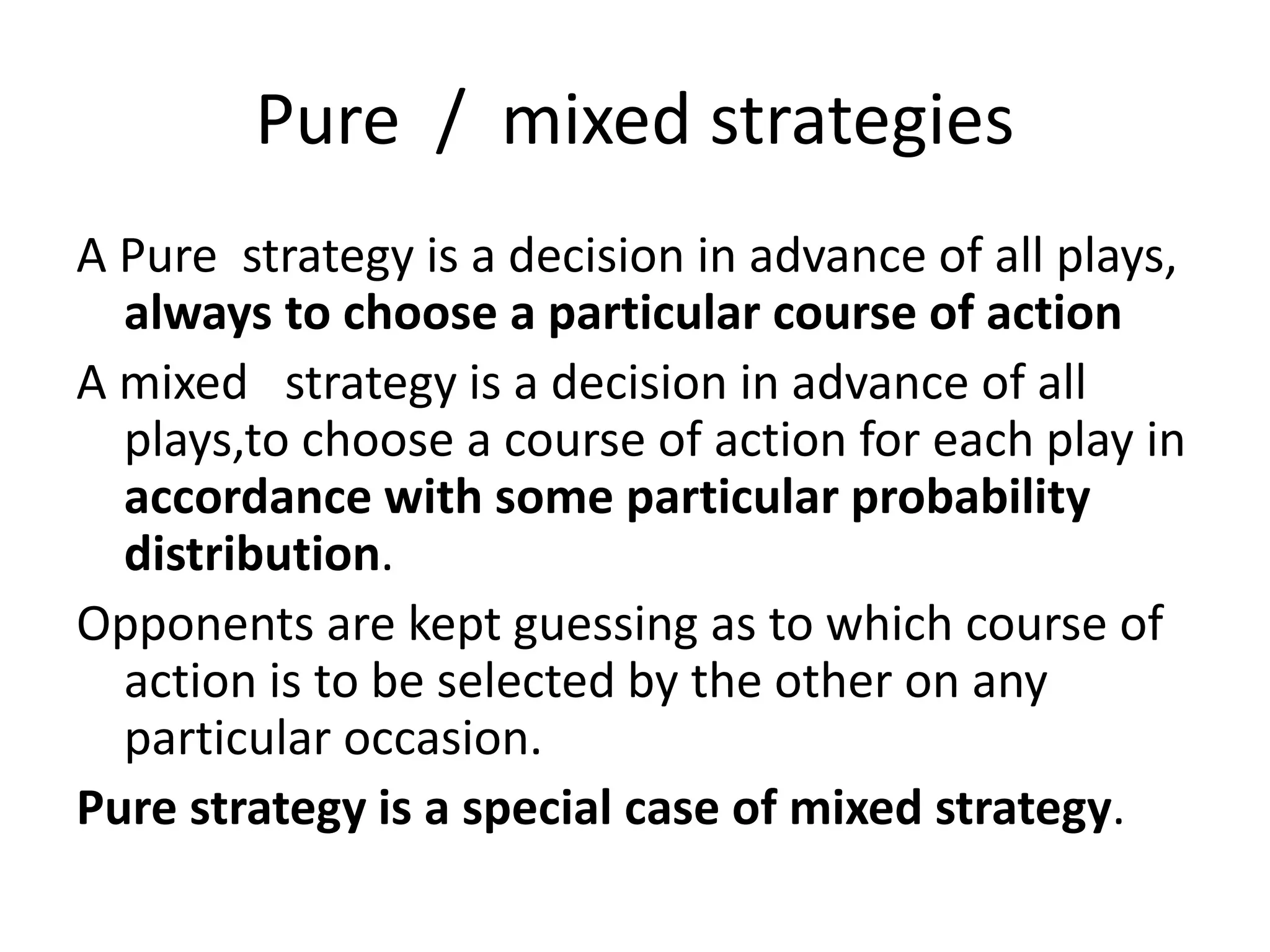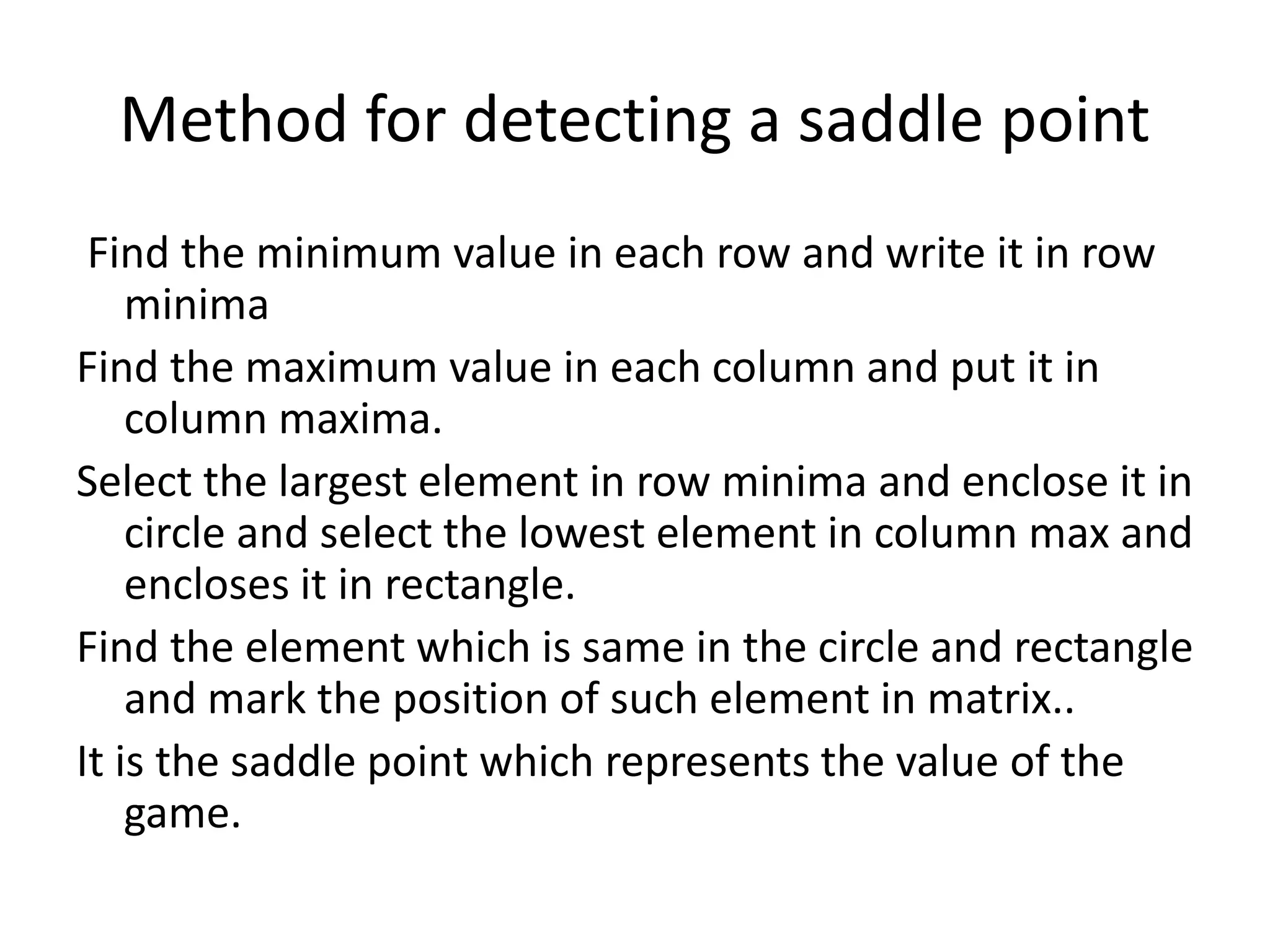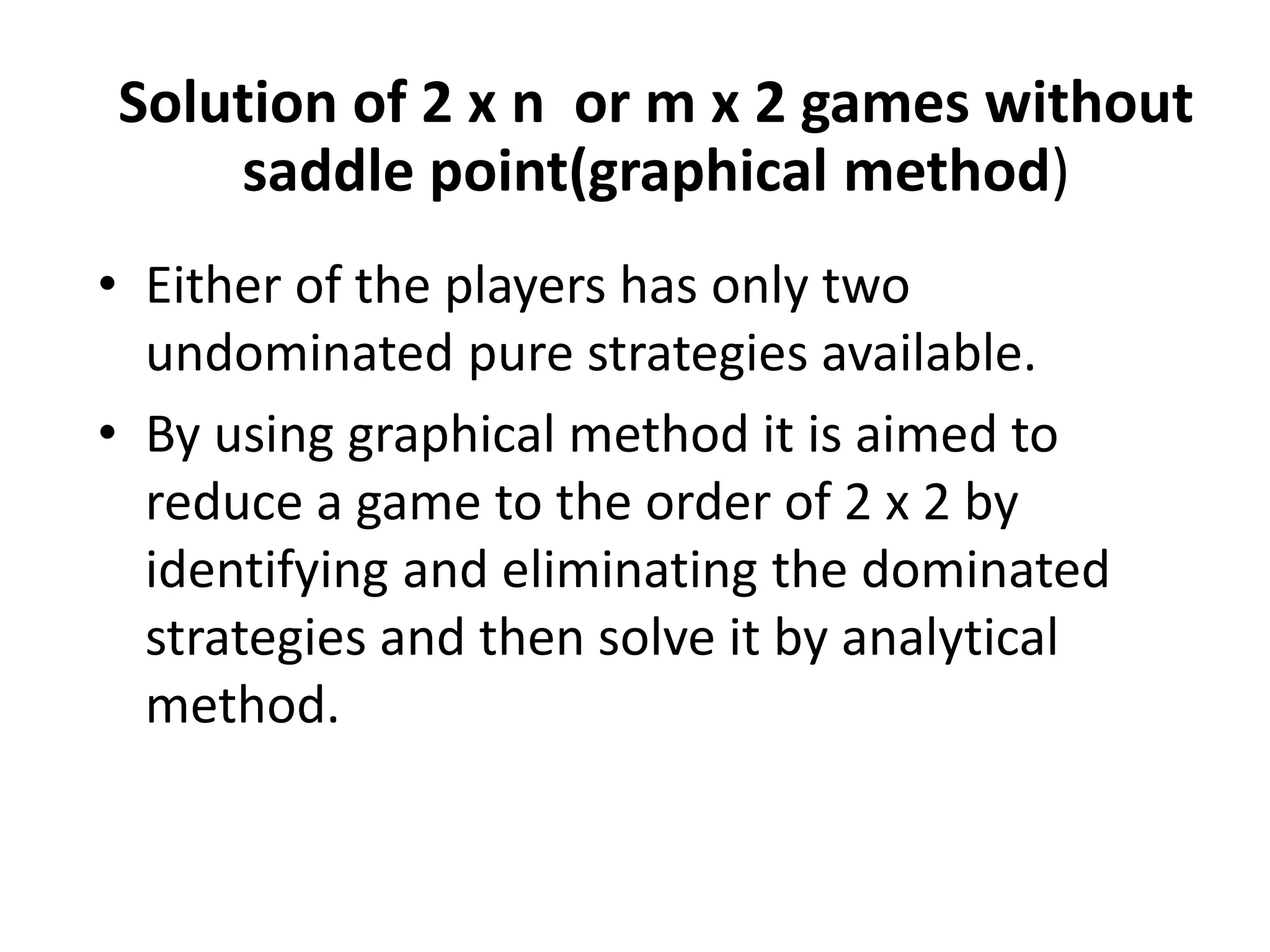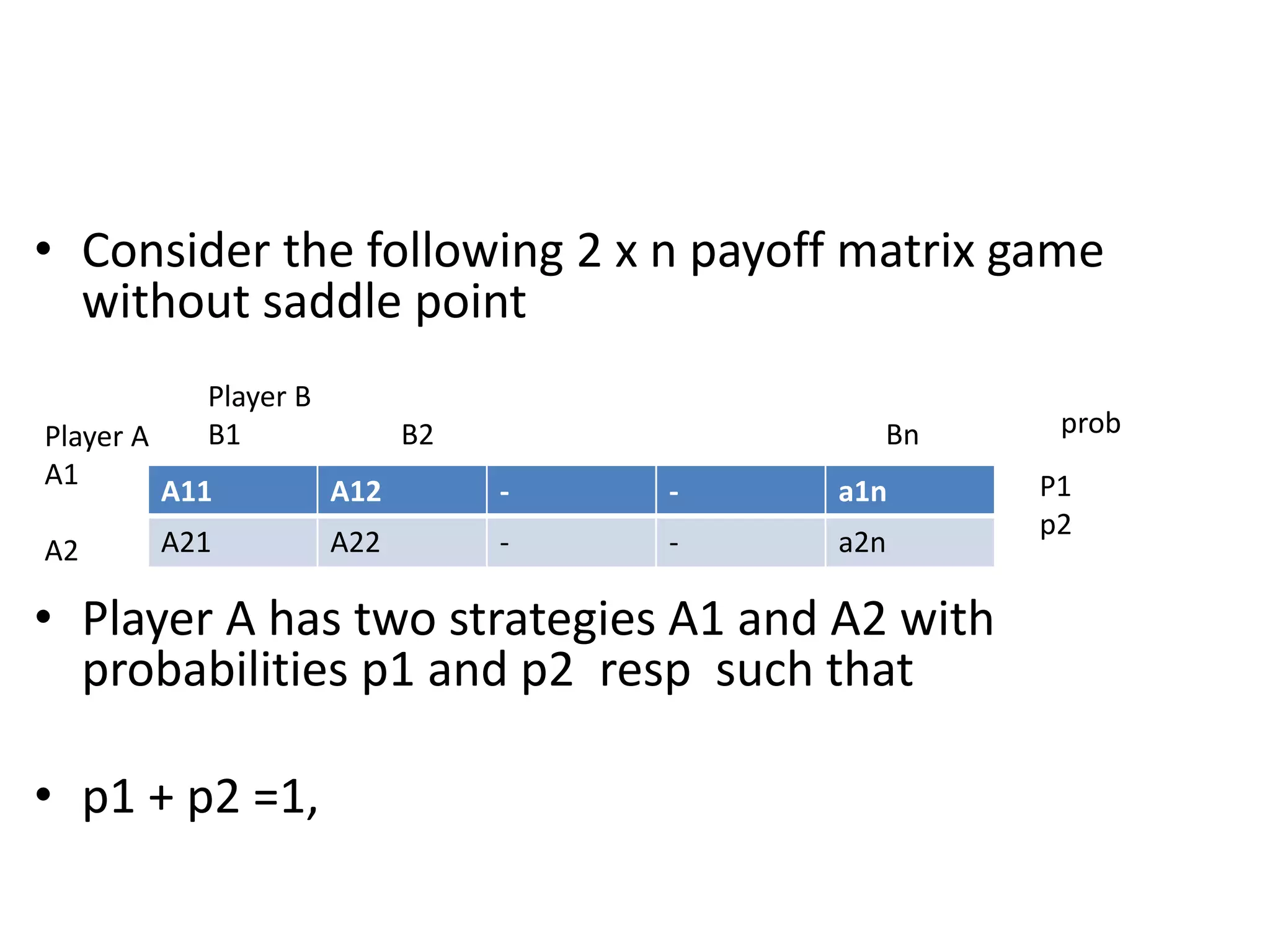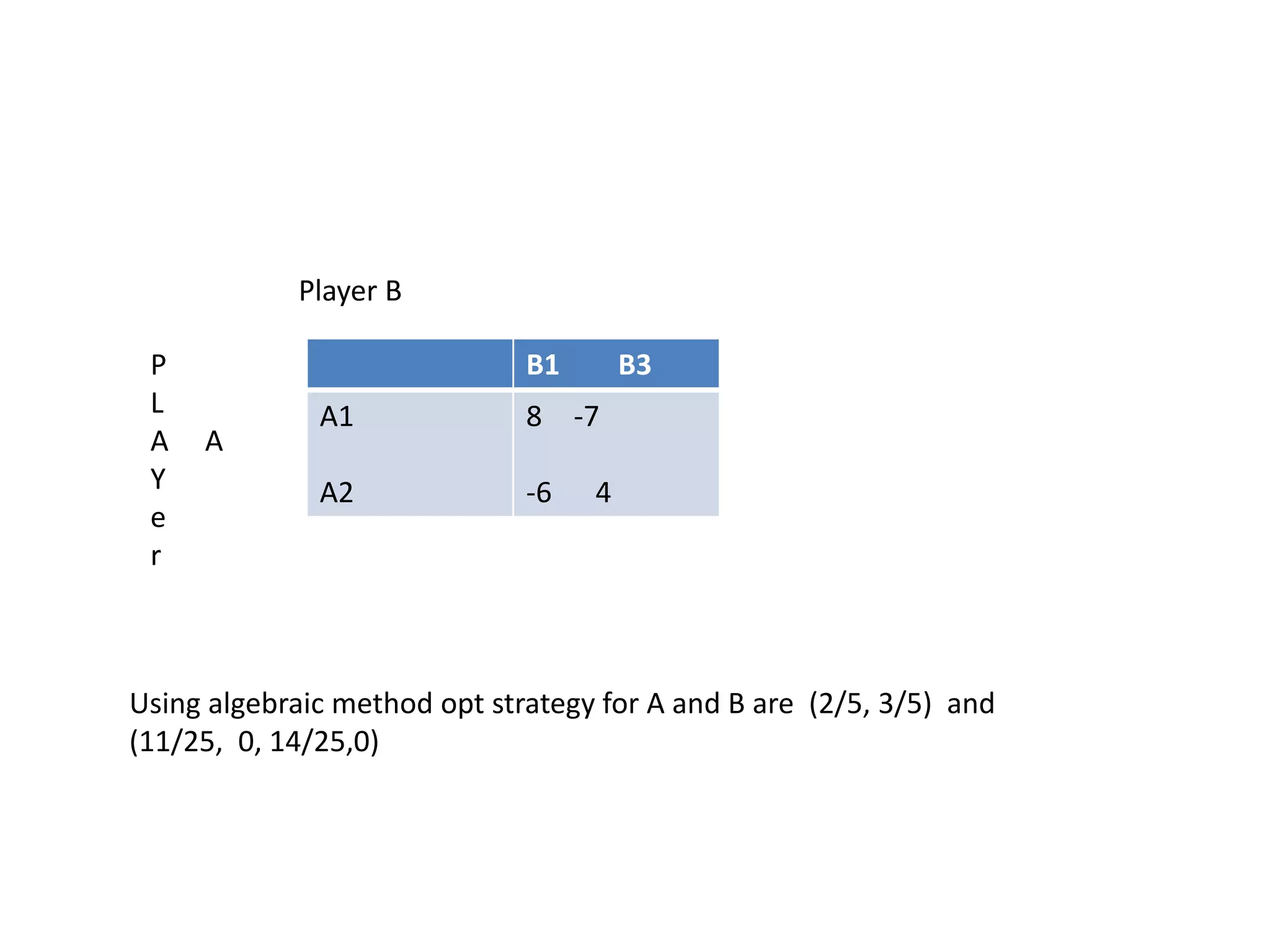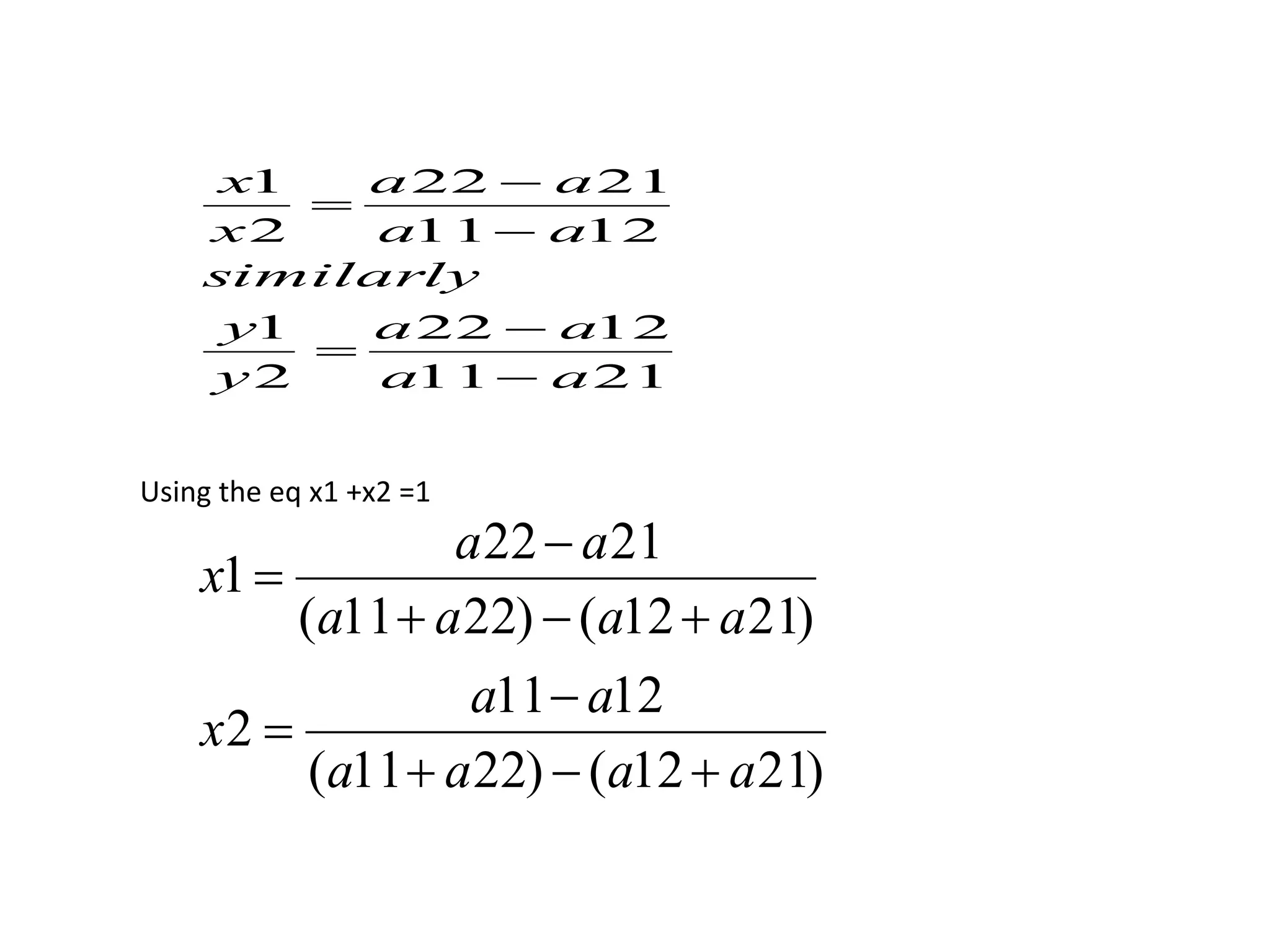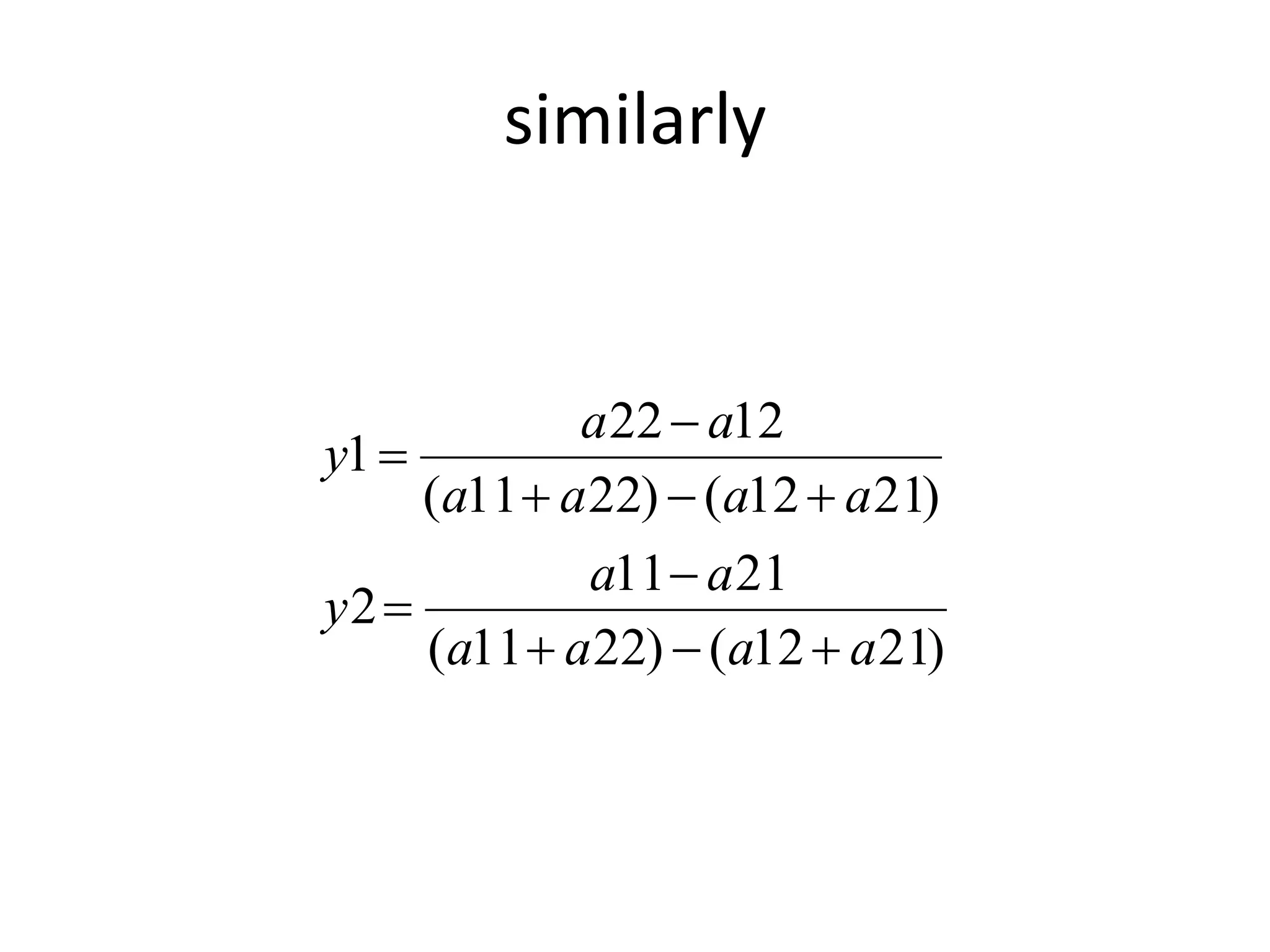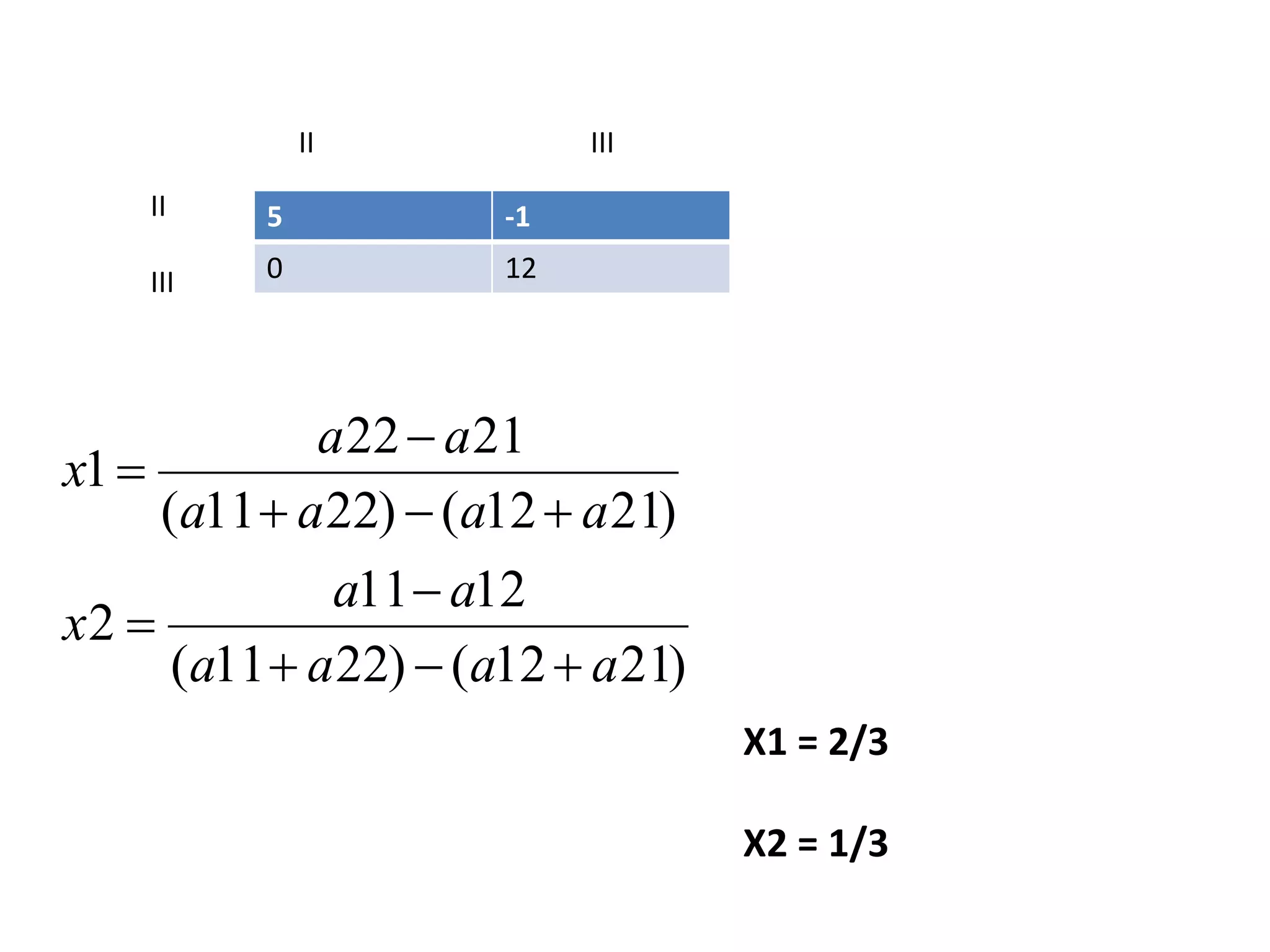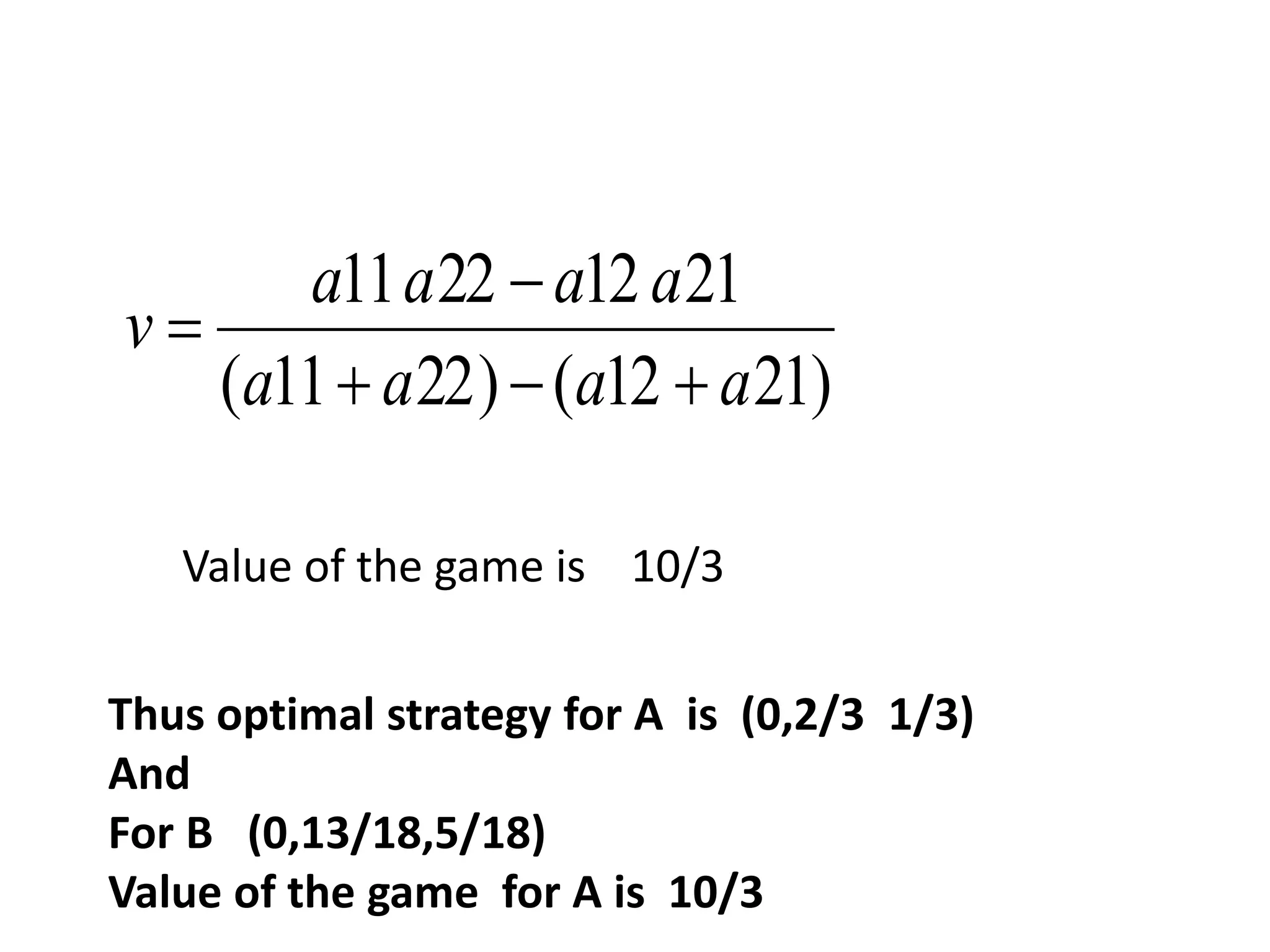This document discusses game theory and how to solve two-person zero-sum games. It explains that game theory models strategic interactions between parties with conflicting interests. A two-person zero-sum game is one where one player's gains equal the other's losses. Such games can be represented using a payoff matrix, from which optimal strategies and the value of the game can be determined. Techniques include finding pure and mixed strategies, saddle points, and using dominance rules and graphical methods to reduce larger games.









